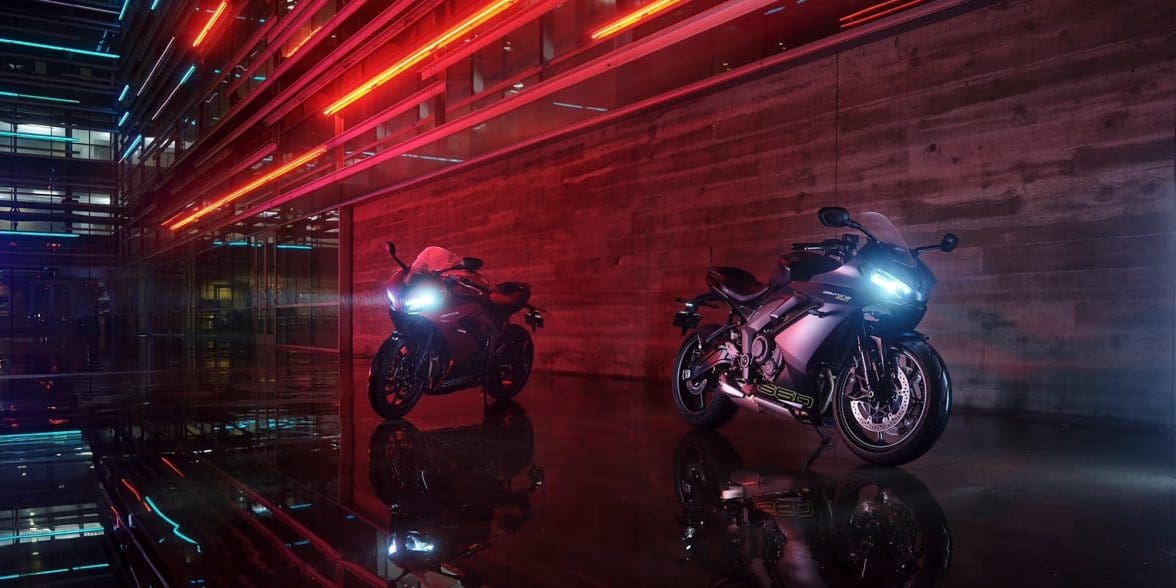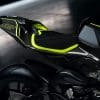|
Triumph’s finally done it; the Daytona 660 has made its proper debut, and judging by both the hardware and the software, we’ve been given a nice bit of track potential.
No more sneak glimpses and spy shots, folks – she’s here!
Triumph revealed their new sportbike sweetheart yesterday. We knew it was going to happen – just not when.
As it happens, this particular Daytona 660 took us a bit by surprise, with pros and cons across the board:
The Pros
- It’s not a full-fairing Trident 660, and that’s a compliment. Many found the Trident’s short gearing to be a bit of a bummer, and on a sportbike, that gearing would have likely killed the thing’s reputation before it had a proper chance on our local roads.
- You can expect a lower insurance rate with this bike. The Daytona 660’s specific displacement (and placement in our industry) basically guarantees a better monthly equation than basically any bike with “RR” at the end of it.
- 95hp for $9,195 USD is a good price (obviously more goes into a deal than the price and the pony power, but we get into the particulars further down in the article)
The Cons
- Despite ranking a higher power rating than the Trident 660, this Daytona is still the lowest displacement of any of Triumph’s Daytonas to date.
- Expect riders to “start uncorking” their Daytona 660s in an effort to get closer to the ultra-sexy Daytona 765 Moto2.
The bottom line is that we’ve been given a 95hp machine that runs 443lbs wet and will no doubt spend more than a few sweltering afternoons about the local circuits of our good country.
Here’s what we’re getting under the proverbial hood:
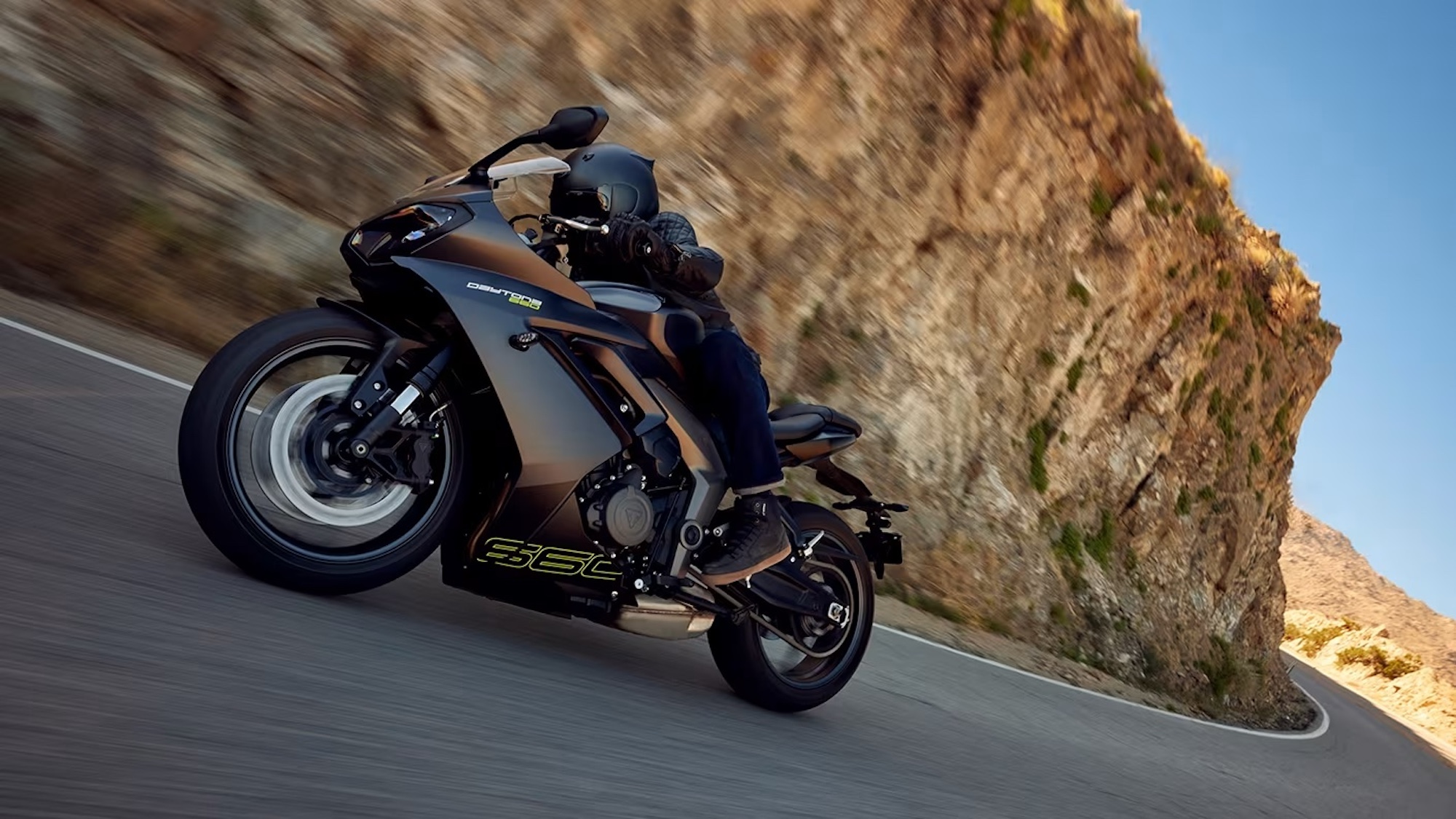
Power Ratings
Triumph tells us that this puppy carries Triumph’s liquid-cooled, inline 3-cylinder engine capable of a stunning 93.6 peak horsepower @11,250rpm with 50.9lb-ft (69Nm) of torque and 80% of that yank available as of 3,150rpm. In the words of Roadracing World’s David Swart, “That’s about 17% and 9% more [power and torque] than a Trident 660, respectively.”
The 12,650rpm redline joins the welcome addition of a slipper clutch and the fact that the 3.9-gallon tank aids in the 57.6 mpg (4.9 L / 100 km) fuel efficiency specs.
Here’s a list of the main stuff that Triumph had to bring on to up-rate the Daytona 660’s power:
- new throttle bodies
- new cylinder head
- new intake ports
- new camshafts
- new pistons
- new ram air intake and airbox
- new pipe system
- new crankshaft
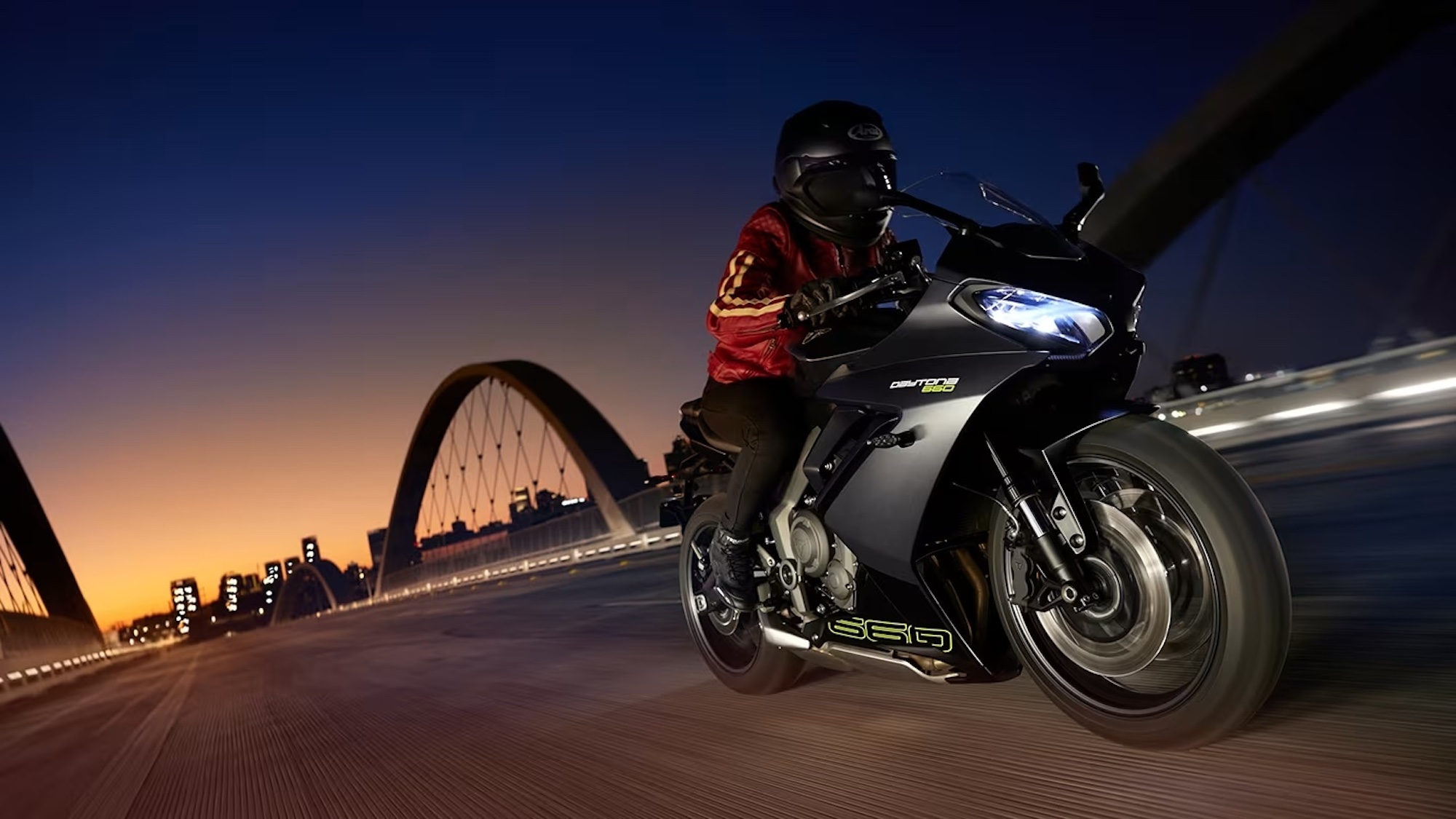
Hardware
For suspension, Triumph has given us Showa units for both front and rear – 41mm, USD big-piston forks (non-adjustable) complementing rear preload adjustability.
Wheels are cast aluminum (5-spoked), shod in Michelin Power 6 rubber. Clamping on to these rolling units are brakes – twin 310mm (12.20in) floating discs mated to 4-piston radial calipers at the front and a single 220mm (8.66in) fixed disc with a single-piston sliding caliper at the back.
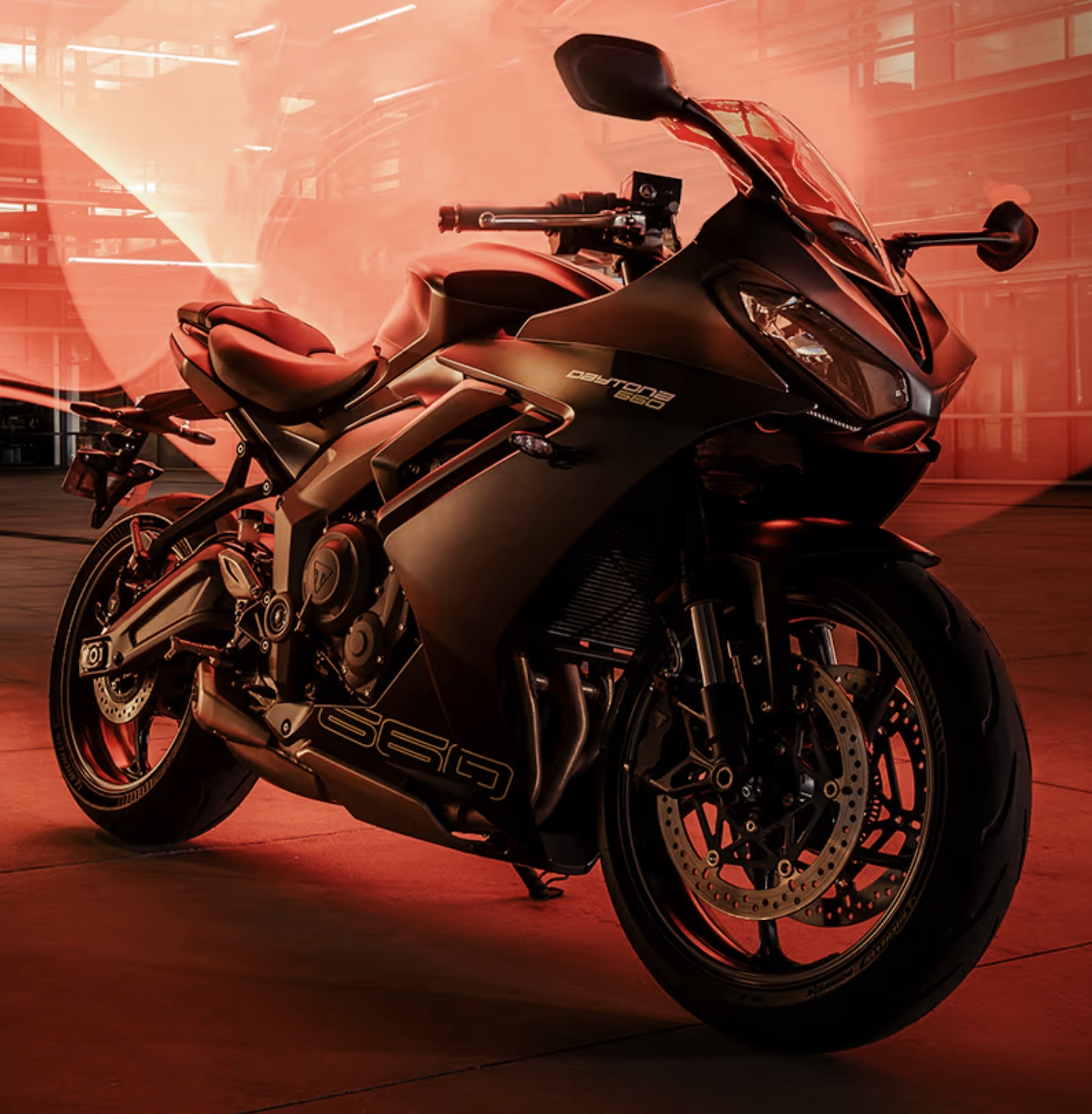


Software
Naturally, Triumph couldn’t pass up on providing their newest Daytona with a comprehensive list of electronics:
- Ride-by-Wire (RbW) throttle control
- Continental ABS
- Three Ride Modes: Sport, Road, Rain (complete with further Traction Control)
- Emergency Deceleration Warning system
- Device connectivity
Roadracing World’s coverage also adds that an electronic quick-shifter will be made available as an additional option.
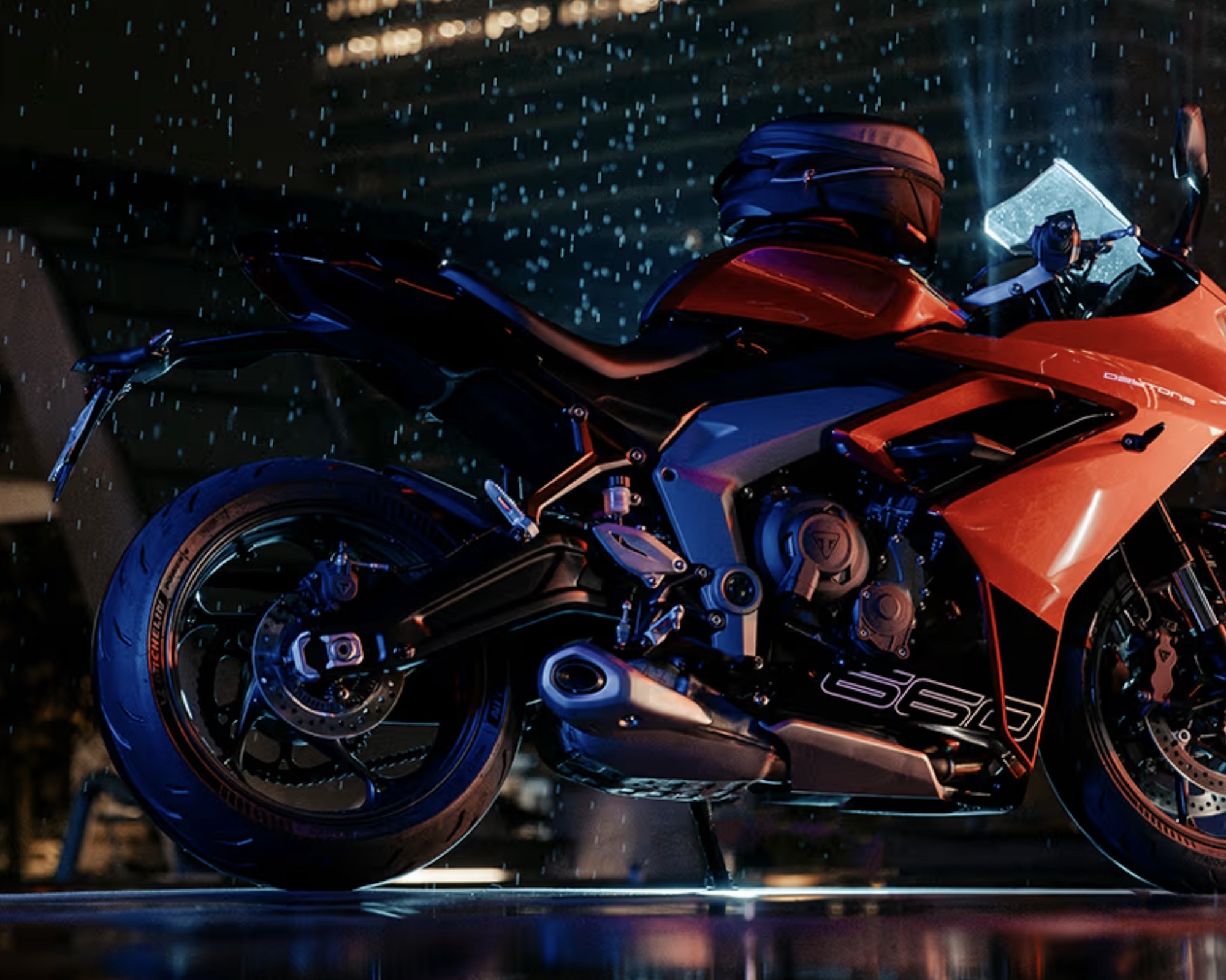


Other Stuff
Triumph’s Daytona 660 will purportedly come with a standard warranty – two years – as well as a race kit.
Curious what paint options you have for this beauty?
Triumph’s website shows the following color scheme options (and the new price points):
- Snowdonia White / Sapphire Black ($9,195.00 USD)
- Satin Granite / Satin Jet Black ($9,320.00 USD)
- Carnival Red / Sapphire Black ($9,320.00 USD)
Of course, Triumph’s Chief Product Officer is more than a little happy at the debut of the new Daytona 660:
– Steve Sargent, Triumph Chief Product Officer (Roadracing World) |
Expect to see Triumph’s Daytona 660 rolling out of dealerships around March of this year.
What do you think of Triumph’s Daytona 660?


